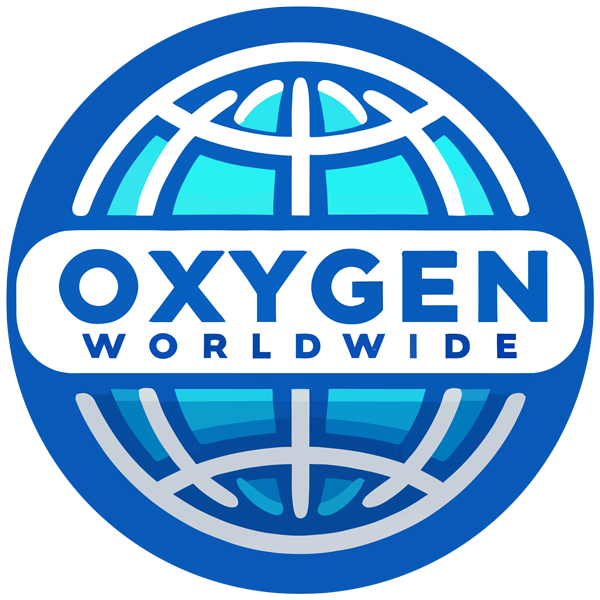Janet* always wanted to travel, ever since she was a child reading stories about wonderful places all over the world. But Janet has cystic fibrosis and needs regular home-based oxygen therapy. Her parents have always told her that her life would have to accommodate her illness and that there will be things that she could not do because of it. Maurice* has severe asthma, barely kept in check by his preventer inhaler. He uses oxygen therapy at night to ensure that he is rested. He has given up on his dreams of going on tour with his favourite international rugby team, traveling widely across the southern hemisphere. A working lifetime spent in a textile factory, especially before health and safety legislation was enacted has seen Chris* developing COPD, the management of which requires the near constant supply of high concentrations of oxygen throughout the day and night – Chris’s dreams to visit family abroad have been shelved due to this condition.
And these three people are not alone. Many people long to travel but believe that their illness is too serious and that managing it will be too much bother to be worth trying.
But, this is not true at all. Yes, there is a bit more to do logistically, and you will have to start planning your holiday or tour early on in the process and be very thorough with it – but traveling with medical oxygen is possible and you can have a great time away from home, even while relying on your oxygen supply while traveling to keep you happy and healthy to enjoy it all.
You may be thinking, ‘Hey? But I need oxygen all the time! I can’t go on a plane without my supplementary oxygen and it’s a hazardous chemical, it’s banned!’ And this is broadly true – many airlines do not allow any oxygen cylinders to be brought along with them, and there seems to be a hard and fast agreement on this. However, digging a little deeper, into the various international travel authorities shows that there is some leeway when it comes to flying with oxygen: the TSA, known for being incredibly strict, says the following: ‘Personal oxygen is permitted if the regulatory valve has not been tampered with or removed. Unless being used for personal medical oxygen, the gas cylinder regulator valve must be completely disconnected from the cylinder (in other words, the cylinder has an open end that allows the TSA officer to visually inspect the cylinder)’ [per https://www.tsa.gov/ emphasis the writer’s own].
As well as this tiny offer of some medical oxygen cylinders being permitted on board flights – and do check with your chosen airline well in advance and make sure you meet all their requirements and have confirmations from them before you head to the airport.
So much for the flight – what about accessing portable medical oxygen while you are abroad, potentially facing language and culture barriers as well as treatment differences and their associated costs? This is where companies like OxygenWorldwide can help you. Working with a huge array of local partners in countries all over the world, they will help ensure your oxygen supply while traveling, delivering it where it is needed, when it is needed – they will even meet you right off the plane, if that’s what you need.
Let’s have a look at how to travel with oxygen and how OxygenWorldwide can help you realise your dreams of touring the world.
Can You Travel with Medical Oxygen? Absolutely!
As we have seen from the section above, talking about how restrictive traveling with medical oxygen can be, it is easy to assume that other methods of travel, and indeed places like Airbnb rooms, hotels, self-contained flats and more, must have similar restrictions and be unwilling to take on the responsibility of having an unwell person staying with them. But this is not the case at all. Many people travel with medical conditions that require some form of allowances to be made, including their use of medical oxygen: from athletes like Serena Williams, Michael Phelps, Christiano Ronaldo and Tiger Woods, to stars like Lady Gaga, Billy Joel and Keith Urban – all have used portable oxygen to heal from injuries faster, to sleep better and more restfully, and to maintain their good looks and high energy levels.
Any time you need to invest in oxygen for travel, you will have to check with your airline about what forms of oxygen therapy you can take and use on board the plane – and it is mainly planes that have restrictions on oxygen, due to the fact that flying happens at altitude, which can affect the way oxygen cylinders behave. Most airlines are sanguine about oxygen concentrators, which do not have any compressed oxygen at all, instead using the air around you to filter out the high proportion of nitrogen and leaving nearly pure oxygen for your use while onboard so if you have any doubts, that might be the way to go. Other options include oxygen cylinders (usually a hard no on flights) and liquid oxygen (or LOX) tanks which are a useful solution for regular oxygen users who need to be out and about for a lot of the day.
Other forms of public transport tend to allow traveling with oxygen as long as the equipment and cylinder do not take up too much space and encroach on other passengers’ comfort and safety. But, as always, it is worth calling ahead and making sure – it is better to ask and not need to have done so than the alternative.
Planning Ahead: The Key to a Smooth Trip
As mentioned in the introduction, you must plan ahead if you’re looking to sort out your oxygen supply while traveling. This is simply to allow your chosen supplier – someone like OxygenWorldwide – the time they need to source oxygen from their contacts on the ground and arrange for deliveries to be made at the times and places that suit you. Once you make contact, with your planned itinerary, OxygenWorldwide will spring into action and ensure that all your needs are seamlessly met.
If you have never traveled while needing oxygen before, there are some key steps you should be aware of.
- Consult your doctor about your proposed visits, ask if there are any special precautions you should take, and ask for a medical certificate stating that your need for oxygen while traveling is genuine.
- Plan which equipment you will take with you, which you will need access to while staying abroad and plan out how you will get about during the day. Knowing your own oxygen needs will help you choose the right equipment to enhance your journey and keep you breathing comfortably as you travel.
- Consult the operators of your preferred method of travel, and using their policies and regulations as a guideline, plan your oxygen delivery accordingly.
- Make sure you involve OxygenWorldwide as early in the process as possible: not only can they take care of a lot of the logistical issues on your behalf, but with a long timeframe in which to work, they can ensure that your oxygen needs are met effortlessly – making it so easy that will you’ll wonder why you haven’t travelled before!
Traveling by Air, Land, and Sea with Oxygen
If you’re not sure of how to find the information you need – and sometimes websites can have the relevant bits of information tucked away deep in the FAQs or even in the lengthy terms and conditions – you can always phone or email the airline and ask what their in-flight oxygen policies are, and whether they offer in-flight oxygen services to passengers who need it. The same applies to ferries, international trains, and even coach travel: in every case, usually just asking the question will be enough to get you the answers you need.
Flying with Oxygen
Some airlines do offer onboard oxygen for people who have proven that they need it. Once again, you will have to ask specific questions of your chosen airline to find out if they are one, or if you will have to source a portable oxygen concentrator to take with you for the duration of the flight. Your doctor will be able to organise a hypoxic challenge test, which exposes you to similar oxygen saturations that you will experience onboard the plane, to see how your body reacts to a pressurised cabin atmosphere. This is simulated by use of 15% oxygen concentration, somewhat lower than the air on ground level.
Taking a Train or Cruise
While the requirements of cruise and train operators are less stringent than airlines, you should still take steps to inform the operator of your oxygen needs and specifically ask if it is all right to carry along your portable oxygen equipment. By making sure that you are open and honest about your medical needs well in advance of your voyage, you will give the transport company maximum opportunity to help your travel plans go well. On long train journeys or cruises, you can speak to OxygenWorldwide to ensure that your replacement oxygen cylinders or tanks are waiting for you when needed, at strategic points of call. Liaising between the transport company and OxygenWorldwide sounds tricky – but it is something that OxygenWorldwide is well experienced with.
Oxygen Delivery at Your Destination
And, of course, OxygenWorldwide can also deliver oxygen to your end destination at intervals that best suit your needs. Their international network of medical oxygen suppliers understand the importance of meeting your needs, and can meet you at your hotel room, rental property, cruise port or even airline arrivals gate – wherever you need them to be, OxygenWorldwide will ensure that they are ready and waiting for you.
And should something go awry, OxygenWorldwide have an emergency phone line that is monitored around the clock, with operatives trained in helping smooth out any travel bumps that might unexpectedly crop up. If this all sounds almost too good to be true, why not put it to the test and call or message OxygenWorldwide now? You might be very pleasantly surprised that you too can travel with relative freedom, even while reliant on medical oxygen.
*Not their real names, composite characters from various case studies




